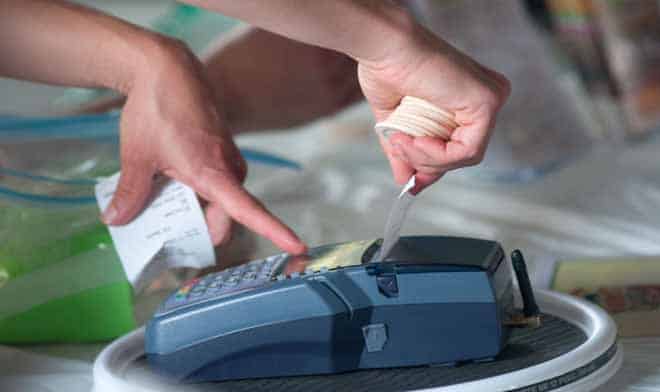According to the U.S. Department of Agriculture (USDA), the number of farmers markets in the United States has jumped 464 percent since 1994. Now with more than 8,000 markets nationwide, many including farmers, market managers, food assistance administrators, and technology companies are looking to streamline the purchasing mechanisms for dollars spent at farmers markets.
Many markets use a combination of cash, tokens, paper vouchers, and mobile credit card devices to accommodate various forms of payment cycling through the market. These payment options require markets to have point-of-sale (POS) terminals or wireless devices, which can be prohibitively expensive for smaller markets and vendors to maintain. Current reimbursement strategies for various paper- and token-based payment methods also require significant administrative time for market managers and volunteers. The Portland Farmers Market (PFM) vendor handbook explains, “Although the token program is successful and necessary, it is time consuming and costly for PFM to administer at no cost to vendors.”
Past efforts to use smartphones and tablets for debit and Supplemental Nutrition Assistance Program (SNAP) benefit transactions have run into trouble because the available applications did not have the capability to accept Personal Identification Numbers (PIN). The USDA Food and Nutrition Service (FSN) acknowledges the desire of farmers and local markets to utilize mobile technologies: “There has been much interest expressed in the farmers market community about applications, add-ons and hardware that support the completion of credit and debit transactions on smartphones, tablets, and other hand-held mobile devices.” Yet FSN goes on to explain, “The PIN is a basic component of every EBT transaction. Without a PIN, the transaction cannot be approved by any EBT processor. It is the only means of identification the SNAP customer has to ensure that they are the authorized user of the card.”
Mobile Market+, a new device and application from the Novo Dia Group, is designed to manage the multiple payment options available to market shoppers, saving time and money for the market and its vendors, while allowing customers to use several types of food assistance, in addition to debit and credit cards. The app has the PIN functionality necessary to make EBT and debit purchases possible.
By providing an integrated payment and automatic deposit setup, markets and individual vendors can accept a wider range of payment methods, particularly with regard to WIC and SNAP food dollars, without the additional administrative and financial burden. Fair Food Network, which operates an electronic, tokenless pilot of their Double Up Food Bucks program in Kent County, Michigan, has recently signed on to add the Double Up Food Bucks incentive program to the Mobile Market+ application.













